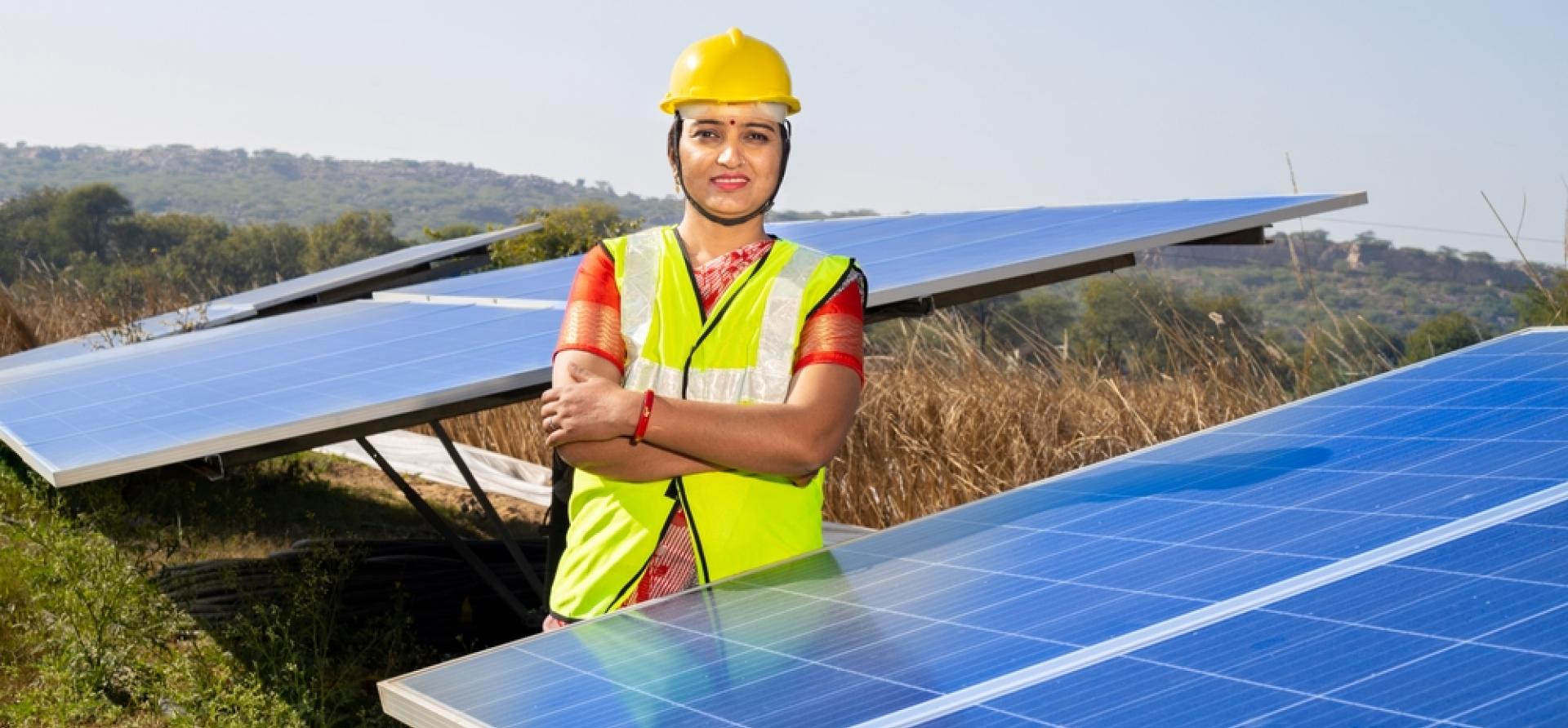Empowering women to front the energy transition in Asia

Key Findings
Improving women’s productivity and incomes through reliable and affordable access to energy for economic activities could help in accomplishing Sustainable Development Goals 5 (gender equity), 7 (affordable and clean energy) and 8 (decent work and economic growth).
Renewable energy and women’s empowerment are multi-dimensional and have critical connections with other sectors, including tribal and rural development, climate change, irrigation, industry, women’s and children’s welfare, etc.
Supporting women’s participation in the clean energy sector requires targeted policy focusing on creating awareness, training and skill development, access to cheap finance, government schemes and subsidies and addressing broader systemic gender issues such as property and equal access laws, land rights and political participation.
Women in South Asia are disproportionately impacted due to a lack of energy access and poverty. They spend a considerable amount of time and monthly budget on collecting materials for fuel stacking. The problem is particularly acute in rural settings, where women spend significant time on tasks like collecting firewood for basic cooking, heating and lighting needs. The health risks are also immense as women and children are often more exposed to toxic smoke, which is detrimental to their health.
The Global Gender Gap Report (2021) shows that among developing countries, women are the most disadvantaged in the workforce in South Asia (33.8 %). Women are proportionately more engaged in informal, vulnerable, low-paid or undervalued jobs than men. This is despite their ability to play an important role and contribute substantially to their personal or family development and overall economic growth.
Improving women’s productivity and incomes through reliable and affordable access to energy for economic activities could help in accomplishing Sustainable Development Goals 5 (gender equity), 7 (affordable and clean energy) and 8 (decent work and economic growth).
Making Women the Forefront of India’s Energy Transition
Prime Minister Narendra Modi, at COP26 in Glasgow, announced India’s ‘Lifestyle for the Environment (LiFE) Movement,’ which aims to propagate sustainable lifestyles based on traditions and values of conservation and moderation. Women-led programmes implementing renewable energy and climate-friendly solutions can support the LiFE movement and India’s pledge towards a net zero-carbon economy by 2070.
Given India is transitioning to clean energy and would require new skill sets, it is the right time and opportunity to build the capacity of women so that they can participate in the formal workforce and divert their time on income-generating opportunities, which will empower them. This will result in them having a voice in pushing for their child’s education, especially girls, using more sustainable energy choices and energy-efficient appliances, etc., which will positively impact their income and productivity.
Because of improved energy access, women in rural India now get opportunities in high-earning jobs. Solar Sahelis in Rajasthan is a classic example of how women have turned entrepreneurs and roped in more and more women to their network to improve the sale of solar lamps and provide after-sales services. Participating in income-generating activities has improved their welfare and physical and mental well-being.
Policy Convergence Driving Synergies for Women-led Growth
Lack of awareness and, at times, lack of required skillsets impact women’s confidence to engage in income-generating opportunities. Women have limited decision-making authority, especially in rural communities. Thus, it is important to develop women-centric policies where women are the main stakeholders and beneficiaries of the policies and interventions.
In addition, renewable energy and women’s empowerment are multi-dimensional and have critical connections with other sectors, including tribal and rural development, climate change, irrigation, industry, women’s and children’s welfare, etc. Thus, identifying convergence between policies and schemes implemented by various union ministries is key for better synergies.
There is a need to address policy hurdles regarding obtaining government subsidies, standardising procurement practices, creating alternate financing mechanisms and demonstrating financial benefits through pilots, which can enable more participation of women in the clean energy sector.
Financial Inclusion of Women
Women can leverage various financing mechanisms offered by many financial institutions, including banks and microfinance institutions, to fund the procurement of clean energy solutions. However, it is important to identify the right financing instrument that matches a borrower’s risk-return profile and provides flexible repayment options to women to avoid unwarranted financial burdens.
Access to government subsidies should also be simplified so that the most vulnerable communities, especially women, can access the financial support offered under various central and state government policies and programmes.
Most of the micro-enterprises set up by the women are self-financed. They do not have the required upfront capital, which makes them more vulnerable. A more supportive ecosystem needs to be created for the women to thrive and have better livelihood opportunities. Imparting them with the education and required skills and providing them with energy access is necessary. More importantly, women’s financial inclusion is a big challenge that must be addressed by providing them access to cheap finance.
Gender-inclusive Clean Energy Sector
Supporting women’s participation in the clean energy sector requires targeted policy focusing on creating awareness, training and skill development, access to cheap finance, government schemes and subsidies and addressing broader systemic gender issues such as property and equal access laws, land rights and political participation.
Developing a gender-inclusive clean energy sector can thus empower women in rural communities as consumers and producers of clean energy and act as a catalyst for women’s empowerment by generating socioeconomic opportunities and a transition towards a greener and more sustainable future.
(This article was first published by Energy Tracker Asia)















